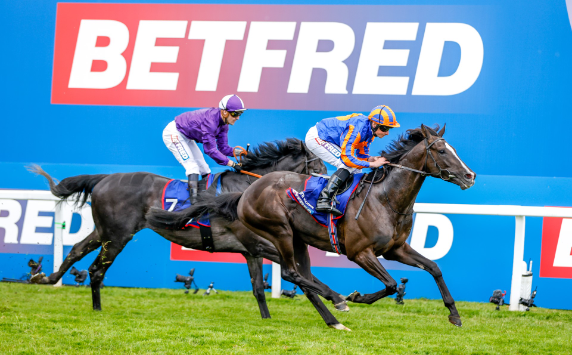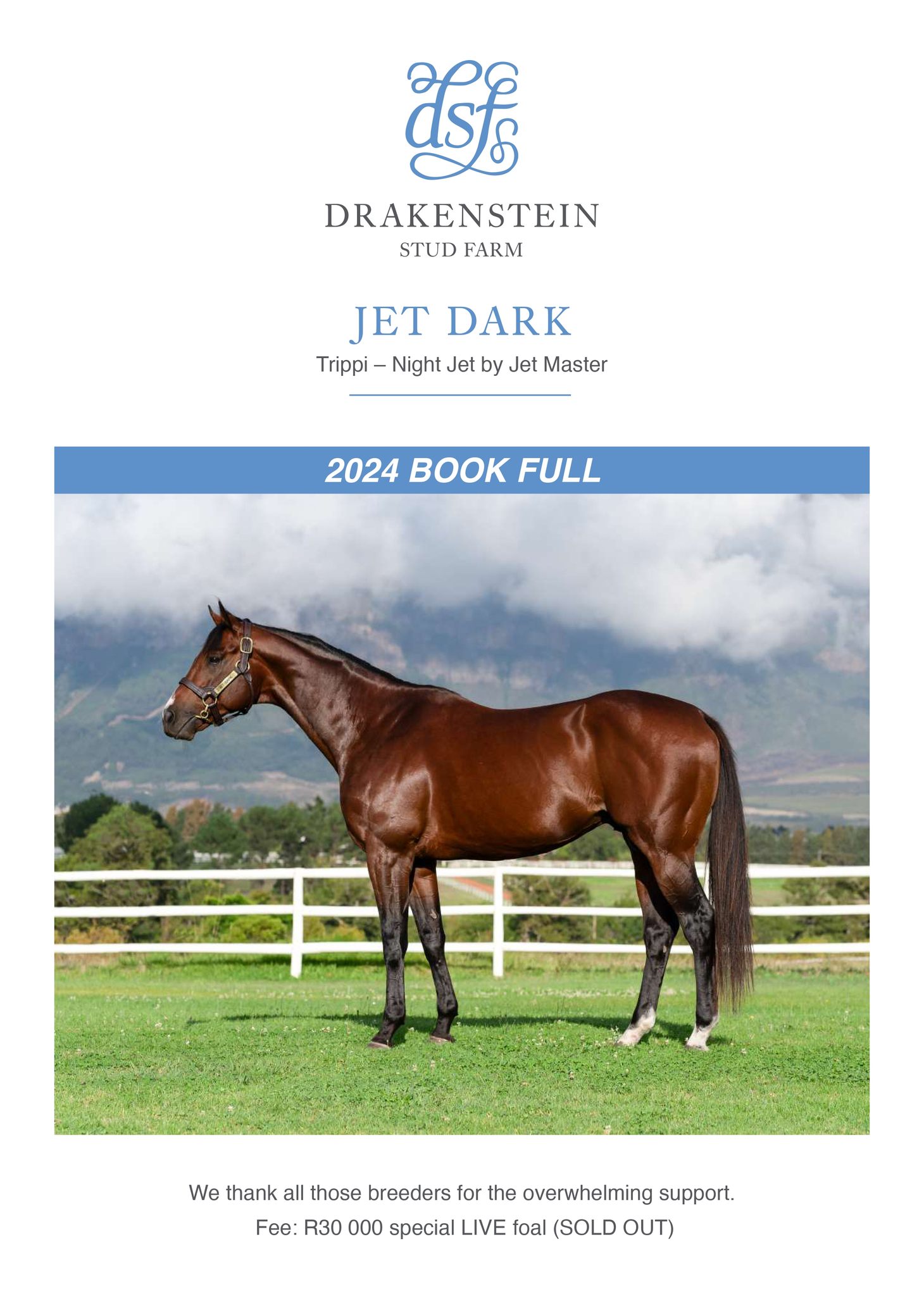I first met Jimmy Lithgow in about 2010 when he criticised one of my articles. Not the best way to start a friendship perhaps, but once I’d had a glass of wine and considered the feedback, I came to appreciate the fact that not only had he digested what I wrote, but that he’d noticed a mistake and taken the time and the effort to help me out. And that it was actually a pretty nice thing to do, because as we all know, details matter.
I rang him up and we had a chat and he sounded perfectly charming and we arranged to meet the next time he was in Cape Town. And so we did. And he was even more charming in real life than he’d been on the phone and I found myself decidedly won over. I confess I’ve been a bit of a fan ever since.
So it gave me enormous pleasure to see Jimmy awarded the Equus trophy for his contribution to media in the television category last week. I was at the awards in 2010 when Jimmy’s son Aidan (currently hard at work on his Legends of the Turf project) won the same trophy and I remember Jimmy beaming with pride and telling everyone who would listen that he’d “sired a winner!” This year, having been called to the stage himself, Jimmy prised the microphone from a decidedly nervous looking Graeme Haw-kins and ann-ounced to the assembly that he was proud to be following in his son’s footsteps. Now if that doesn’t elicit a collective ‘awwww’ then I don’t know what does. Our annual awards season is our industry’s opportunity to show ourselves a little appreciation and so I thought I’d spend a little time getting to know Jimmy a little better.
James Alexander Charles Lithgow was born in Johannesburg in 1946. His father was a gynaecologist and his mother the daughter of a compound manager at the Robinson Deep Mine near Turffontein. He is the eldest of their 3 children.
Jimmy relates that he grew up very close to his grandmother, who lived in a magnificent Johannesburg mine house, in central Johannesburg. Grandmother Ida (better known as “Babs”) and her sisters Doris and Mavis were regular racegoers and loved getting dressed up and having a flutter on the horses. Jimmy recalls being enthralled at their tales of the horses and race course characters and of course the ups and downs of the day’s fortunes. It was the days of gloves and hats and huge crowds at Turffontein. We all have a special horse that first draws us to the game and for Jimmy it came when Babs told him about a horse that seemed unbeatable. She’d watched the horse carefully and noted that the owner always produced sugar lumps in the winner’s enclosure and Babs reckoned those sugar lumps were the key to their success. The horse was called Nagaina Hall. The story so fascinated the young boy that he would sit glued to the radio whenever Nagaina Hall ran and his devotion was richly rewarded when the horse went on to win all the Highveld Classics including the Summer Handicap. The Sunday Times racing segment became his bible and he remembers reading Alan Breck and Alf Copestake in particular.
Nagaina Hall remained a hero and his turf duels with Riza became legendary. In fact, Nagaina Hall’s second tilt at the Summer Handicap turned out to be rather prescient, when the race was won by a grey horse called Casbah, trained by Les Rathbone. Casbah had won the last Dingaans run as a Pony and Galloway race and Jimmy remembers the defeat of his hero as one of the biggest disappointments of his life.
Another vivid memory was being at Greyville the year Kerason won the July for Syd Laird for the first time (although Jimmy admits to preferring Thunder Sky that particular day). It was racing’s heyday when members would pack elaborate picnics, queue up at the gates and then stage a veritable gold rush to the infield to secure the best picnic spots. Listening to Jimmy tell it transports one back to a grander, more glamorous time.
Jimmy’s mother was keen on horses and used to go riding on weekends, and so horses were a feature in his life from very early on. It was while living in Maritzburg that the Lithgow family befriended KZN trainer Harry McDonnell, who was one of their neighbours. Harry frequently used to consult with Dr Lithgow with regards to medical treatments for his string and in fact, Dr Lithgow was one of the first people to use ultrasound on horses.
His father attended races every Saturday, and on one particular weekend Jimmy was promised that ‘if father won at the races’ they’d all go to the circus. That sparked a rather more pointed interest in their neighbour’s fortunes and he remembers waiting anxiously for the strings to come back from races and finding out the results from the grooms.
Jimmy recounts being ‘reasonable’ at sport as a schoolboy, mainly enjoying cricket which he says he played with “tremendous dash and flair”, even though it later transpired that his eyesight wasn’t what it should be and he frequently missed the ball ! It was at high school that Jimmy first discovered his love for theatre. His first role was as Antigone in the school play. He refused the suggested padding and became the flattest chested heroine in the history of the play. In Std 9 he tackled Shakespeare for the first time in Richard II, where the excitement and nerves rather got the better of him and he swept off stage before the main act. “Ruined the play!” he chuckles.
After matric, the army beckoned and then he attended Wits where he got a BA, majoring in English and the History of Art. He also cultivated his theatrical leanings, winning a small part in his first professional play at the Alexander Theatre. His favourite role was Malvolio in Twelfth Night and he says he has thrived on playing eccentrics ever since.
A small legacy from a godmother whom he had never met bought him a ticket to England where he and Terry Hammond, now a prominent Australian screenwriter, spent 3 months attending every play and film they could. When the funds started running low, a brief stint as a tour operator with Continental Coach Tours in the UK afforded him the opportunity to earn a living while travelling Europe .
August 1969 found him back home and he found himself in the PR department at SAA. 1920 had seen the first flight between the UK and South Africa and one of his first assignments was to research and publish “50 Years of Flight”, a history of aviation in South Africa. Jimmy subsequently became the go to guy for anything historical and was frequently called upon for speeches and presentations. He eventually progressed to being the In Flight Entertainment manager, which required regular trips to London and LA to watch and select films and he proudly recounts being one of the first people to see Saturday Night Fever!
An invitation to lunch by Sandy Christie saw Jimmy’s parents introduced to Les and Tilly Rathbone and when they were invited to visit the stables shortly after, Jimmy went along. It was there that he met Les’s young assistant, Elaine. Jimmy says she immediately struck him as a most unusual girl and finally forgiving Casbah for beating Nagaina Hall in the Summer Handicap, Jimmy and Elaine were married in 1974.
Jimmy’s father hadn’t the means to offer a grand wedding present, so presented the young couple his share in a rather obtuse and unattractive mare named Penny Link. The couple had planned an elaborate honeymoon at the Victoria Falls Hotel, but had no means of paying for the travel. Two weeks before the wedding, Elaine ran Penny Link in a 1000m sprint at Turffontein, which she duly won in most exciting fashion, paying for the honeymoon to boot.
After 12 years with SAA, Jimmy left to take up PR duties for Turffontein Racecourse under Sandy Christie. Mr Christie was a fierce stickler for detail and Jimmy recounts him leading senior staff inspections of the racecourse every Saturday, right down to the toilets in the Silver Ring, to ensure that everything was perfect for the day’s racing. Christie was a hard taskmaster, but Jimmy says he learnt the value of thoroughness and attention to detail.
From Turffontein, Jimmy took up the post of Marketing Manager at Newmarket, a position he occupied for 5 years. He was also appointed the Secretary of NATFED, headed by Dudley Basel. In 1988 he was poached by the Durban Turf Club where his tenure included the staging of the Durban July. Jimmy was instrumental in developing the pageantry and fashion around the event as well as instituting the Festival of Racing. Deciding that the Durban Turf Club was a little too “upstairs, downstairs” for his liking, Jimmy struck out on his own for a few years, running an events company, but was lured back as the Chief Executive of Marketing for Highveld Racing in 1995, where he was responsible for managing the overall marketing of Turffontein, Newmarket, the Vaal and Gosforth Park.
The advent of corporatisation saw the administrative landscape changing considerably and Jimmy found himself increasingly involved on the media side. He produced countless documentaries for the racing channel and did presenting work both on and off the track, although these days we are more familiar with hearing and seeing him in studio.
Jimmy received his Equus Award for his wonderful documentary on horses and rhinos. Conceived by Champion Zim trainer Lisa Harris, the initiative sees retired racehorses employed as patrol animals in the Blue Canyon Conservancy in Hoedspruit in the fight against rhino poaching. Not only is it a great conservation effort, but it also provides a second career for horses coming off the track and I’m told the horses adapt particularly well. As with all these things, the project is woefully underfunded and is sorely in need of tack for the horses, warm clothing for rangers (who sleep out at night) and safety gear such as riding hats and boots.
Jimmy’s second submission was his interview with Dennis Drier from his brand new series ‘Stable Talk’. The new series is flighted fortnightly at 6:30am on Tuesday mornings (with repeats at more civilised times for the rest of us) and includes interviews with trainers around the country, a behind the scenes look into their yards and methodologies and introductions and discussions about some of the stable stars. For those who haven’t been following the series, it is well worth a watch (and anyone who saw the Mike Azzie insert would have had some money down on Masai Warrior in the Gold Cup!).
Listening to Jimmy relate the story of his life is a window onto a different world and I soon have pages of notes. He has a way of seeing excitement and adventure in each tale and colours each story with his wonderful voice and use of language. Being steeped in so many aspects of our industry, he brings racing to life in much the same way. There are heroes and villains and tales of daring and high adventure. Listening to Jimmy tell it, racing always seems that little bit more grand.









